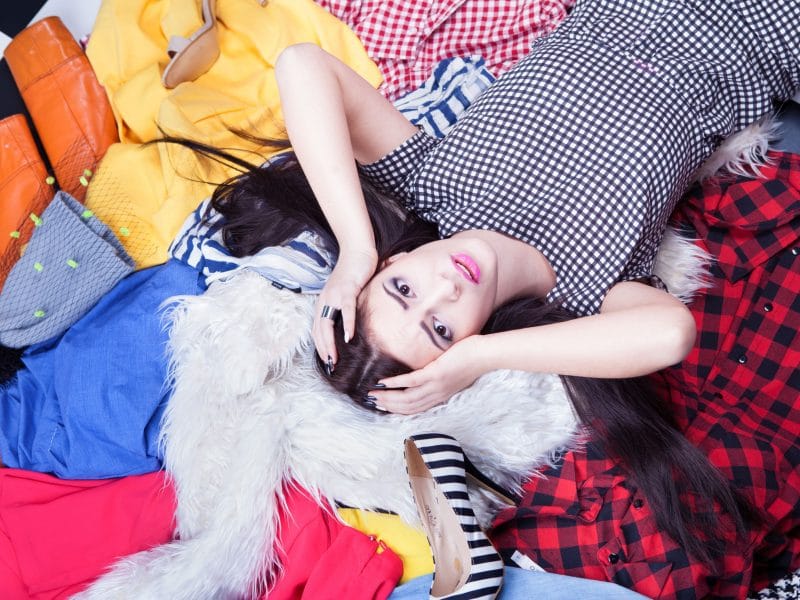With the effects of the pandemic being felt by industry and individuals alike, many of us have had to demonstrate adaptability. One very positive feature of the fashion industry is its resilience. So the world of fashion is well equipped to weather the storm. However it is likely that the industry will look very different. This is not necessarily a bad thing, given that fashion has already begun to undertake a period of development. Covid-19 has accelerated a lot of change that was beginning to be felt in many sectors. The ability to embrace this change is what will ensure the survival of this industry.
The Move Online
For years now, we’ve seen a steady increase in online fashion sales. The organisations to benefit from this change are those who have been swift to respond and put the consumer first. You’ll see this in things like accurate size guides and extended lines that include plus size.
Retail
The best performers through Covid-19 are not necessarily those with the prettiest website. It’s those whose retail sites are intuitive, user friendly and reliable. Consumers in lockdown simply want to be able to search, shop and checkout without having to wade through treacle to do so! For retailers already trading primarily online, like us here at Elle Courbee, it’s really emphasised the scope for this way of shopping.
Stock
Of course, your shopping experience is not complete until you’ve received the goods! So fashion businesses who have successfully managed their warehousing and stock levels have reaped the benefits in customer loyalty.
Catwalk
The Summer of 2020 saw a revolution in online couture shows and collection launch platforms. Seasonal collections garner appreciation through the drape and texture of fabrics, so it’s easy to dismiss digital shows as poor substitutes. Indeed, we certainly haven’t seen the end of the live catwalk show. However, the way that brands have embraced technology to innovatively showcase collections is a signal to the strength of the industry’s digital offering moving forwards.
Creative Solutions
When everything’s cancelled so people don’t dress for occasions, and professional wardrobes are on a hiatus as we work from home, what remains for styling? This has been a quandary for the fashion industry as it navigates Covid-19 restrictions. Designs have reflected the creative solutions that have emerged. Designer branding has moved to necklines to be visible on video conferencing. Tailored features are more exaggerated on cuffs, collars and lapels for similar reasons. Many consumers have actually found that they’re presenting themselves even more through online platforms than they did before Covid. So it’s important to pay attention to how your clothes hang with a supportive bra, cami or other foundation layer.
Mask Style
The speed by which the fashion industry styled facemarks is a very visible commercial response to the international Covid-19 requirement to wear face coverings. It’s transformed this restriction into a fashion opportunity, with stunning prints, textures and colour ranges. It’s a great example of how nimble, creative and flexible fashion thinkers are, and this surely is a good sign for the future of the sector.
The Individual
As 2020 progressed, we saw in shift in focus to the individual. From fashion houses to social media, collections and models have become more inclusive. So we’ve seen more plus size ranges, real body representation and street style influence. Would this have happened without Covid-19? Absolutely, but it’s something that has been accelerated by the demand of the online consumer.
How Eco met Quality
There are two aspects of the fashion industry’s Covid journey which have dovetailed. The growing ecological concerns of industry figures and consumers alike have led to a step back from cheap fast fashion in favour of quality workmanship. So some people have chosen to stop buying new garments, instead looking to rejuvenate their existing wardrobe, breathing new life into dresses and trousers with the help of a good pair of control briefs. Meanwhile others are concentrating their budget on purchasing good quality designer classic pieces.
The fashion industry is by no means at the end of its adaptation to Covid-19 restrictions. No one knows where things will go next, but we can be certain that good fashion has the resilience to transform and survive.
Becky is an author and copywriter who has been writing about women’s issues and underwear for several years. She also writes blogs which cover a range of topics for local businesses.

 Is the Label ‘Plus-Size’ a Celebration or Discrimination?
Is the Label ‘Plus-Size’ a Celebration or Discrimination?
